What is a Red Route?
What Are Red Routes?
Red Routes were first introduced in 1991 to tackle traffic congestion in major UK cities, particularly London. These distinctive red lines — either single or double — run along the kerb and are there to keep traffic flowing smoothly. They’re commonly found in busy urban areas such as airports, hospitals, and city centres, where any form of stopping could cause serious disruption.
In essence, Red Routes are no-stopping zones. The law strictly forbids motorists from stopping, waiting, loading, or unloading along these stretches unless specific exemptions apply.
Why Red Routes Are Important
Why Red Routes Are Important
Red Routes play a key role in keeping traffic moving efficiently, especially in high-density areas like London. Their main purposes are to:
Prevent congestion by stopping vehicles from blocking busy roads.
Ensure emergency access, allowing ambulances, fire engines, and police vehicles to reach their destinations quickly and safely.
By keeping these routes clear, traffic authorities can maintain a more reliable and consistent flow of vehicles across key transport corridors.
What You Can and Can’t Do on a Red Route
What You Can and Can’t Do on a Red Route
The basic rule is simple: don’t stop on a red line.
However, here’s a breakdown of what’s permitted and what’s not:
No stopping or alighting (getting in or out of the vehicle) on a red route unless signs indicate otherwise.
No parking on red lines painted on the verge, carriageway, or pavement.
Check upright signs for specific times or exemptions — some routes allow limited stopping for loading or disabled access during certain hours.
Red Routes - The Rules in Detail
The Rules in Detail
Double Red Lines
Absolutely no stopping at any time — not for loading, unloading, waiting, or picking up passengers.
Licensed taxis may stop only to drop off or pick up passengers.
Blue Badge holders may stop briefly to help a disabled person get in or out of the vehicle.
Penalties for breaking these rules can exceed £100.
Single Red Lines
Single Red Lines
These indicate restrictions that apply only during certain hours, as shown on nearby signs.
Outside those hours — often between 7 pm and 7 am, or all day on Sundays — stopping or parking is usually permitted.
If additional restrictions apply, they’ll be clearly displayed on signs along the road.
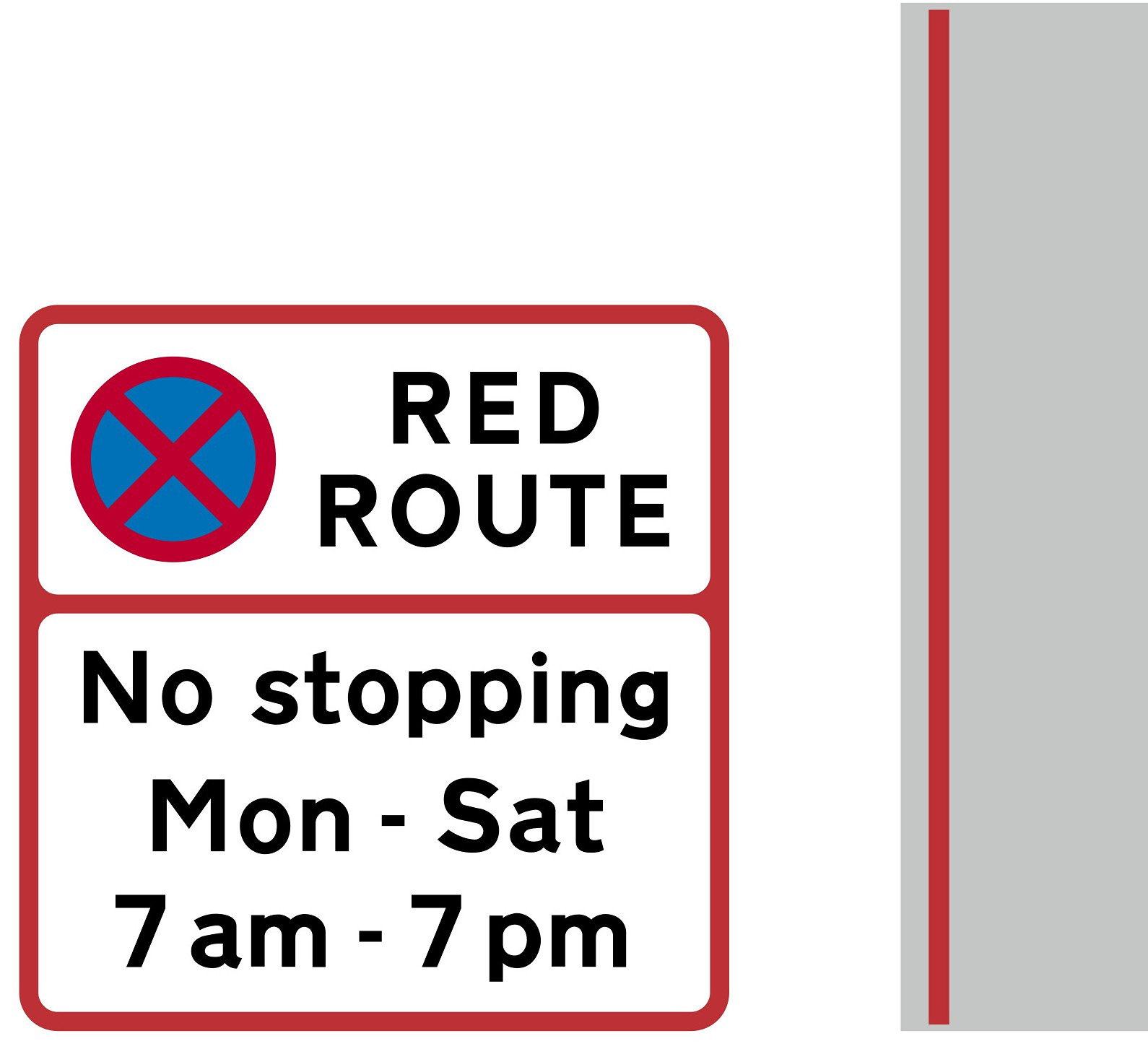
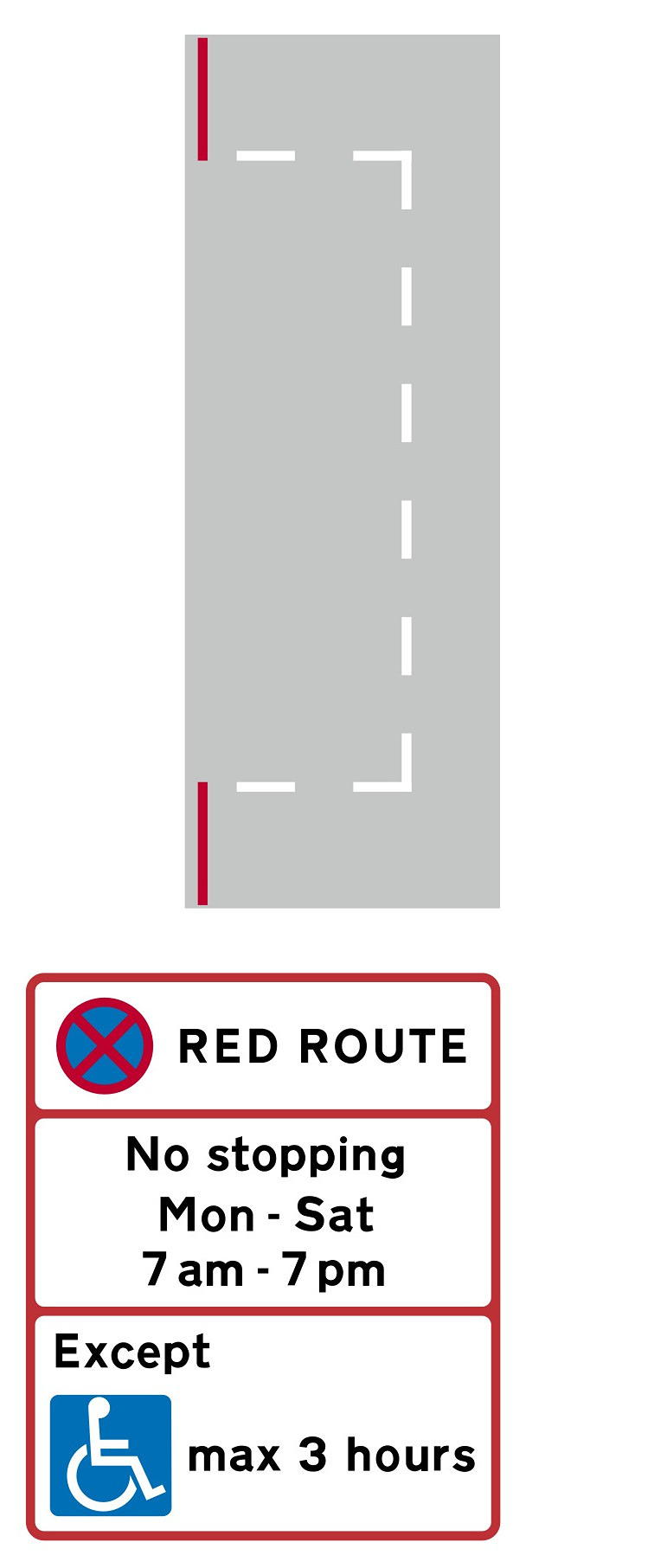
Disabled Parking on Red Routes
Disabled Parking on Red Routes
Blue Badge holders may stop only to assist a disabled passenger.
Parking or waiting beyond that purpose is still prohibited unless specifically signed otherwise.
Penalties and Enforcement
Penalties and Enforcement
Penalty Charge Notices (PCNs)
Motorists who break Red Route rules can receive a Penalty Charge Notice (PCN).
These are issued through:
CCTV enforcement,
Council parking officers, or
Police traffic wardens.
Thousands of PCNs are issued each year for Red Route offences, reflecting how strictly these laws are enforced.
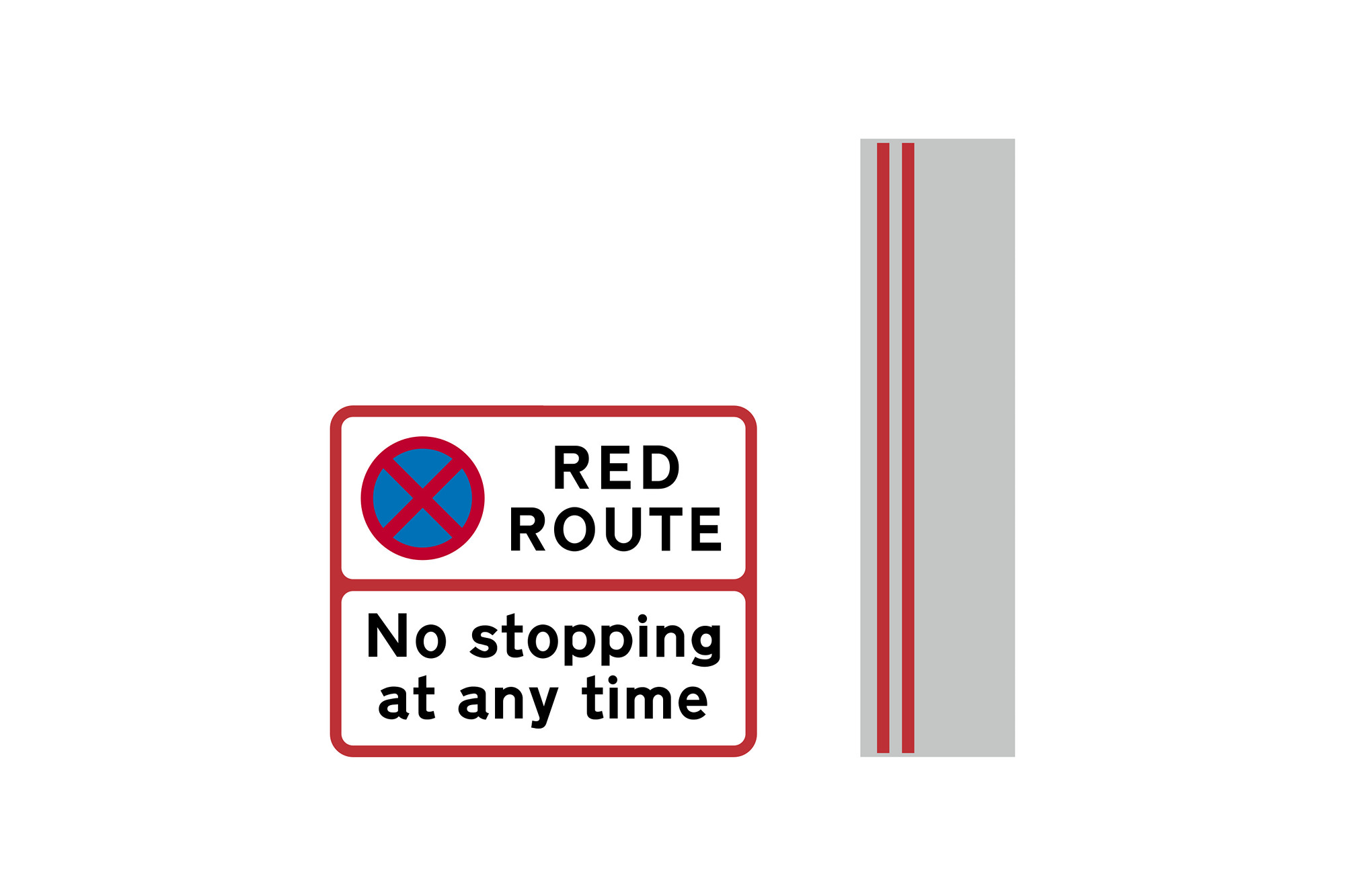
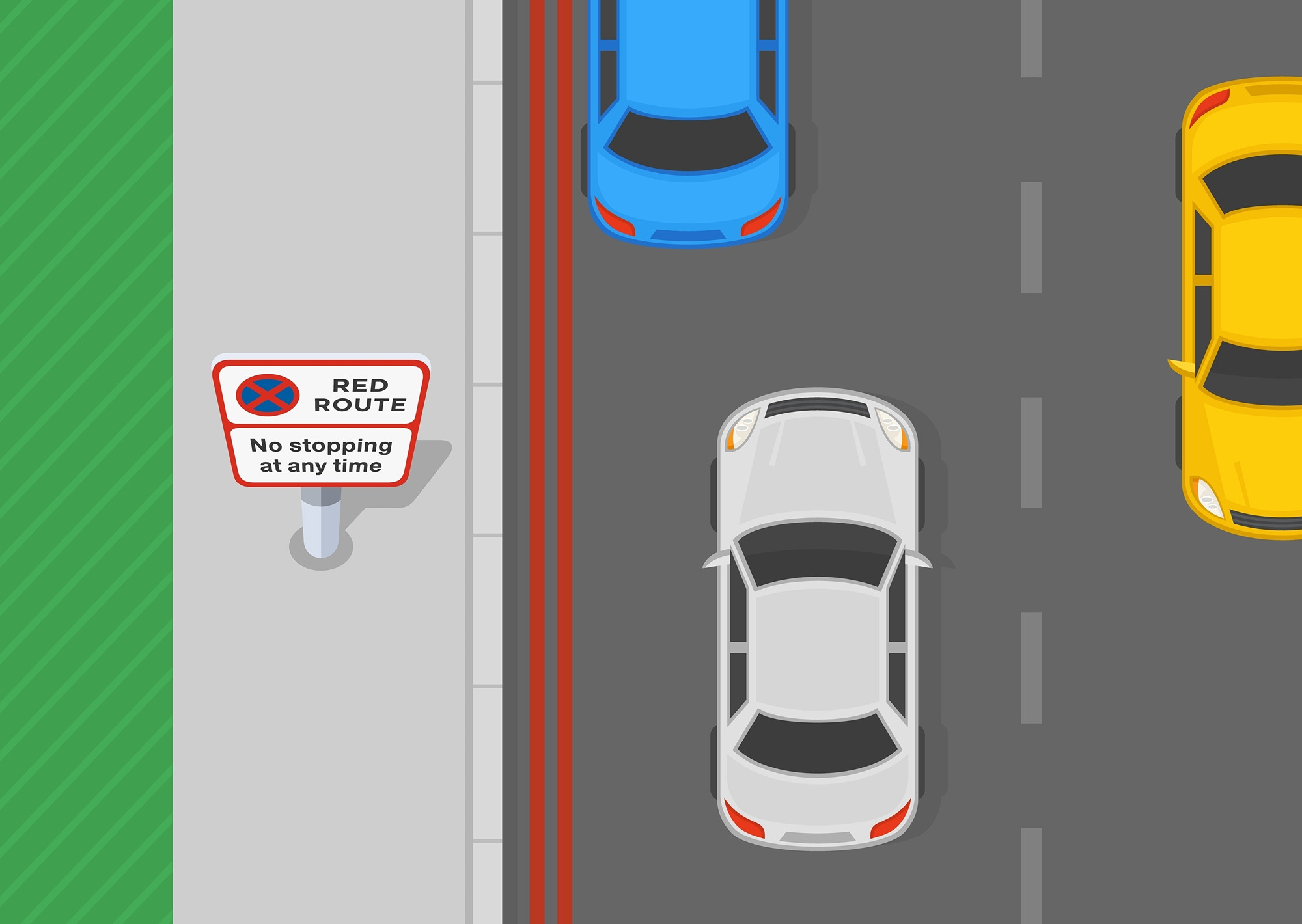
Parking Fines
Parking Fines
Fines typically range from £100 to £200.
If you pay early (usually within 14 days), you’ll receive a 50% discount.
Red Route Signs and Clearways
Red Route Signs and Clearways
Not all Red Routes have painted lines. Some are marked only with upright signs, known as Red Route Clearways.
These indicate that:
Stopping is prohibited for any reason except in clearly marked lay-bys.
Some clearways apply 24 hours a day, while others have specific time limits shown on the signs.
Drivers entering a Red Route area from a side road will see red junction markings to alert them.
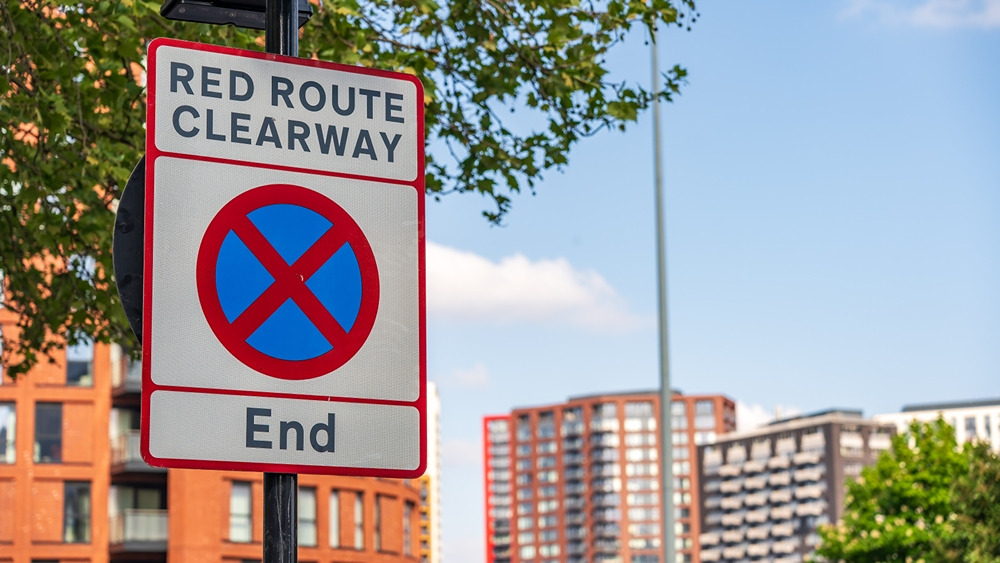
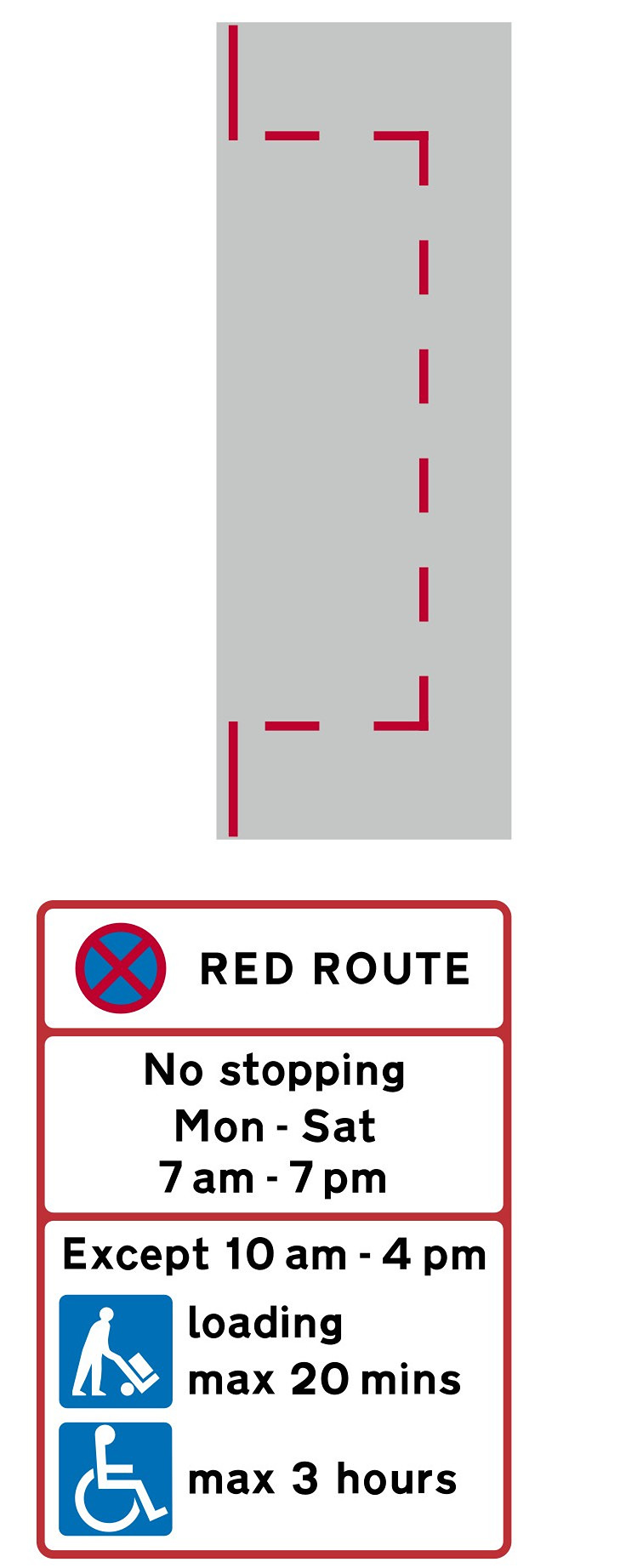
Red Route Parking Bays
Red Route Parking Bays
Certain sections of Red Routes include marked parking or loading bays, identified by broken red or white lines.
Each bay will have a sign showing when and how it can be used — for example, for loading only during specific hours or short-term parking under certain conditions.
Always read the sign before stopping — failure to comply could lead to an instant fine.




